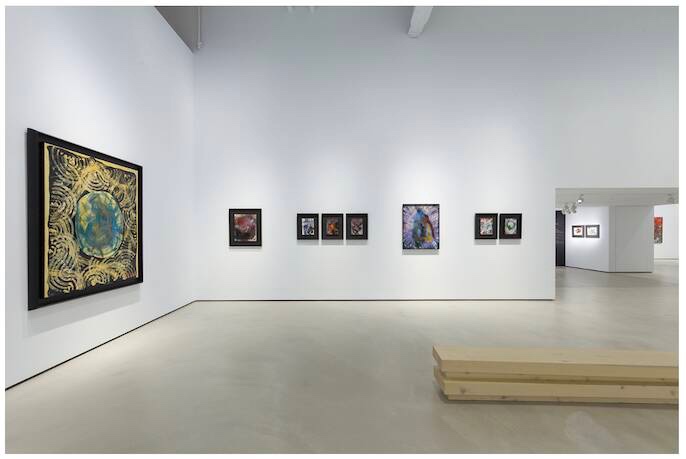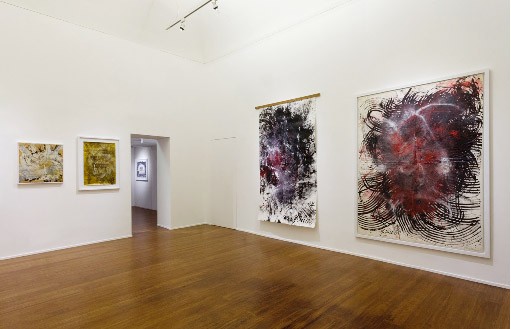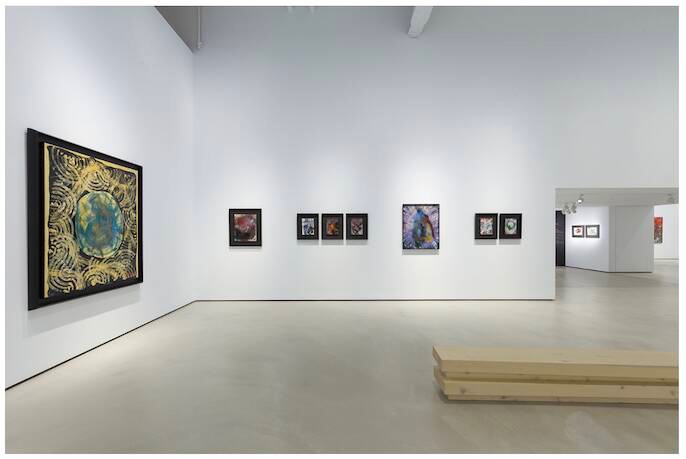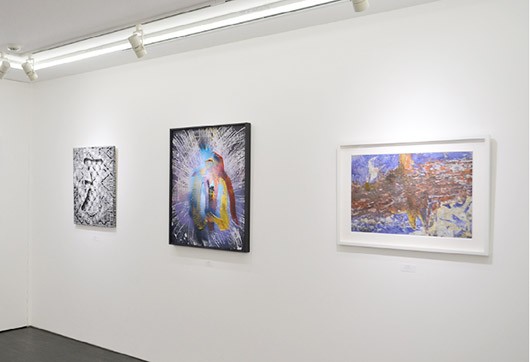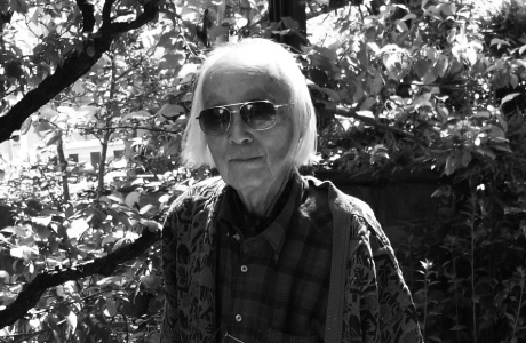
Yasuo Sumi was born in Osaka, Japan in 1925. He entered into the teaching profession after having graduated from Kansai University and the Graduate School of Economics at Ritsumeikan University. While he taught math, he still loved to create, painting in a wild, emotional style that made for an interesting counterpart to his academic background in mathematical analysis.
In 1954, one of Yasuo Sumi's works was nominated by Shozo Shimamoto and then selected for the 7th Ashiya City Exhibition in Hyogo Prefecture. It was there that he met Jiro Yoshihara, who sat on the exhibition's jury. The two got along well, and they connected connecting over the uninhibited zeal Yasuo Sumi put into his practice of splattering oil paints. In 1955, he was invited to join the Gutai Art Association, and he was a consistent contributor throughout, exhibiting in as many as 21 Gutai group showcases.
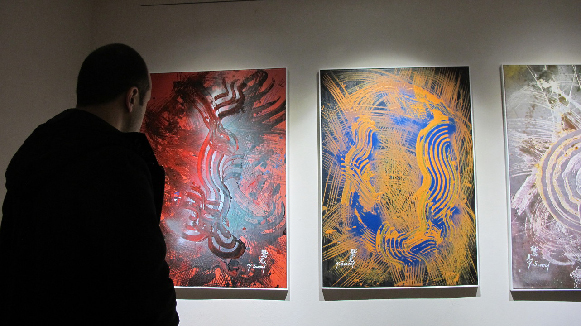
The word 'gutai' was originally proposed by Shozo Shimamoto, and it was Jiro Yoshihara who decided on it as the name of the group, since its meaning represented a counterpoint to abstraction. A practice in painting was the combination of two elements: one technical (as 'gu'), and the other corporal (as 'tai'). For Shozo Shimamoto, the textural and material properties contained within paint were to be released. As he put it, 'Only without a paintbrush, is it possible for the paint to be liberated.' In this way, Guitai artists shared a common understanding, which was namely to make choices about their own creative practices as individuals while jettisoning the forms and mediums of the art of the past. At times, when their bodies were implicated in their work, Gutai artists could seem to be of the same conceptual ilk as performance artists, as they, too, demonstrated the spirit of the avant-garde.
Taking a different approach than Shozo Shimamoto, who filled glass bottles with paint and threw them at the canvas, Yasuo Sumi followed his own conceptual frequencies. Incorporating everyday objects, including soroban (Japanese abacuses), combs, wagasa (oil-paper umbrellas), geta (wooden clogs), and motors into his practice, he could make shapes with precise spirals and parallel lines, and bring a rhythmic repetition to his work. His paintings, then, were marked by complex images that shared a likeness to abstractions, with unique forms that contained a certain elegance and magic. They works are representative of the originality and power in the spirit and charisma that came out of Gutai.
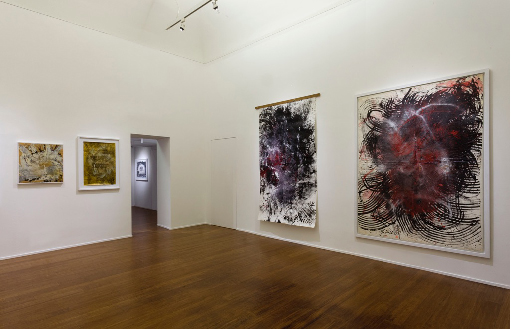
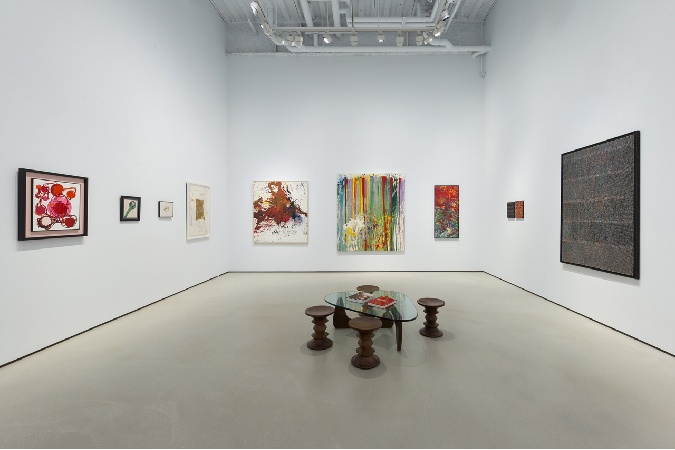
In the words of Japanese art critic Yoshio Katoh, There is an inspired light in Yasuo Sumi's expressive range and intensity that is not found in the average person, and he turns it into art with his application of Gutai methods.
Over the course of his l i f e , Yasuo Sumi honed in on three important convictions in his art practice: yakekuso (literally 'despair', suggesting spiritual freedom), fumajime (literally 'frivolity', suggesting rejection of tradition), and charanporan ('irresponsibility', suggesting a return to real human nature). This unique life philosophy of his contributed to the light he cast and reflected on other Gutai artists. His creative concepts brimmed with boldness and freedom, and his unrestrained approach to painting drew on those flashes of inspiration and chance encounters with beauty. It was just another day when he knocked over a jar of sumi ink, spilling it on top of a pile of papers, but then he grabbed a soroban and discovered how it could be used to a beautiful effect in painting.
There are no visible strokes from a brush since the work was made using a combination of different tools. On a canvas pre-painted red, the artist rolled around a soroban that had been dipped in white paint, forming a flowing chain of white beads. On top of this, he sprayed a veil of white, blue, yellow, brown, and other colours. Then he put on a pair of geta, which had been daubed in paint, and created another pattern by stepping on the canvas. As if it were a symphony, he proceeded to pick up even more tools and unleash further movements of colour. The work is illustrative of the open-minded, undaunted spirit, and pure nature that Yasuo Sumi put into his work. Setting aside severity and rationality, he let is inner unconscious loose to rouse the potential of oil paint. His free spirit was akin to the wild grass of ancient Chinese calligraphy. And through Western automatic painting techniques, he let his true self be freely expressed in his practice.
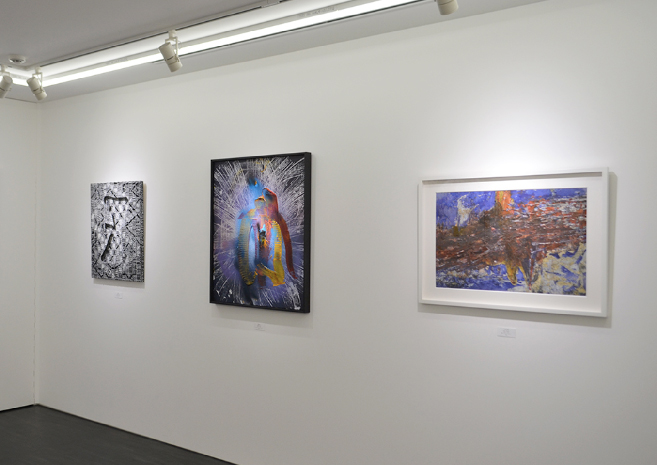
With an art career that spanned over half a century, Yasuo Sumi's works have been exhibited all over the world, including in the Passage to the East group show at the 45th Venice Biennale in Italy (1993), at Galerie Nationale du Jeu de Paume in Paris, France (1999), at the Museo Cantonale d'Arte in Lugano, Switzerland (2010), at the Guggenheim Museum in New York, USA (2013), and the Enchanting Mess: Yasuo Sumi in the 1950s retrospective at the Itami City Museum of Art in Japan (2015). His works are also held in a number of permanent collections, including those of the Rachofsky House in Dallas (USA), the Ashiya City Museum of Art and History, the Miyagi Museum of Art, the Hyogo Prefectural Museum of Art, and the National Museum of Art (Japan).

